Insterburg Museum of Local History
Before the First World War, the Insterburg castle housed the land court and also housed the 12th Uhlan Regiment. After the war, part of the castle premises were handed over to the security police. The main premises of the Hochburg housed the local history museum of the Society of Antiquities. The entrance to the museum was made from the side of Theaterstrasse (now Leo Tolstoy Street), behind the monument to the Uhlan, through an opening in the castle wall.
There were 12 exhibits in the museum:
- collection of finds from the Stone and Bronze Ages;
- Early Iron Age objects;
- collection of inventory from Prussian burial grounds;
- collection of church utensils and objects,
- 248 valuable items from the 18th-19th centuries;
- collection of war trophies;
- interior of a peasant room;
- collection on the history of Insterburg;
- natural history collection;
- numismatic collection;
- collection of coats of arms and flags.
Immediately upon entering the museum, visitors were “greeted” by an old oil portrait of Kaiser Wilhelm I.
The museum's antiquities display included one large and rather rare exhibit - a mammoth tusk, which was discovered in one of the province's sand quarries. The Stone Age was represented by axes, choppers, arrowheads, harpoons and even a stone plough. Most of the items were found during excavations in the vicinity of Insterburg - Althof and Shprindt. Also on display are items from Prussian burial grounds - elements of jewelry, clothing and weapons found in burial and cremation sites.
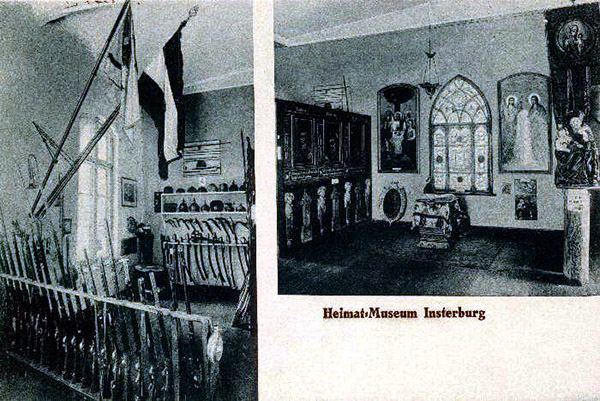
A large section of the museum is dedicated to the regimental history of Prussia before the First World War. Muskets and rifles on shelves, broadswords and sabres, examples of uniforms of almost all East Prussian regiments, as well as banners and some trophies.
The chapel contains a section dedicated to the church. It displays wooden icons and images of saints, organ pipes from the old church and those dating back to the mid-17th century, church banners and much more. There are also several wood paintings by the artist Zeigerman, who painted the Lutheran church. Church books, old prayer books and psalters, as well as one of the two surviving Luther Bibles in the city, are exhibited separately.
Among the numerous exhibits of the city history department is a large copper coat of arms of the city, which used to hang above the entrance to the town hall. Paintings and engravings depicting the city and famous citizens, various furniture, wall and floor clocks, dinnerware and bowls, seals, scrolls and much more.
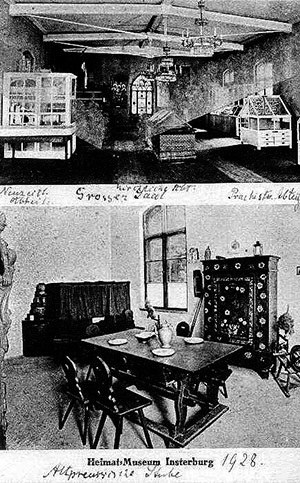
In a separate exhibition dedicated to ancient village customs, the interior of a peasant hut has been restored - a couple of peasant costumes, furniture, household utensils and tools that tell about the life of peasants.
In the autumn of 1944, all exhibits of the museum under the leadership of its director Walter Gronau and the chairman of the Society for Antiquities Walter Grunert were prepared for evacuation deep into Germany. The museum was taken to Berlin, to the Zeughaus. It is not known for certain where these exhibits are now. According to some evidence, the museum was transported to Freiburg, where it was eventually partially looted by the Allies.
In general, the post-war fate of the Insterburg Museum collections is unknown. However, items from the archaeological collection were found in the storerooms of the University of Leipzig.
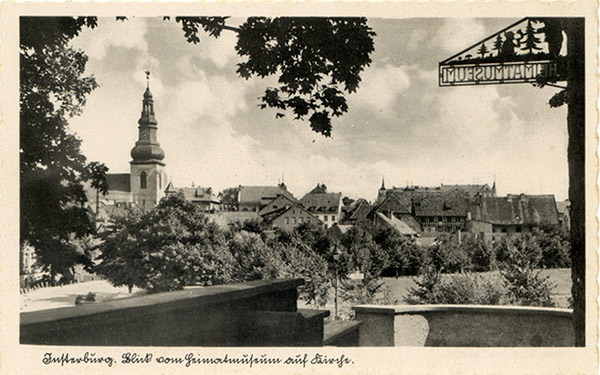
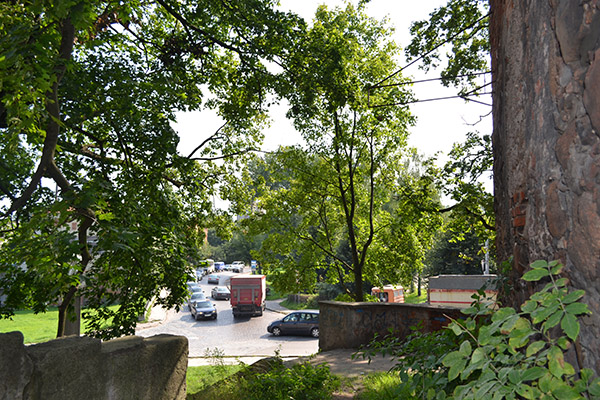
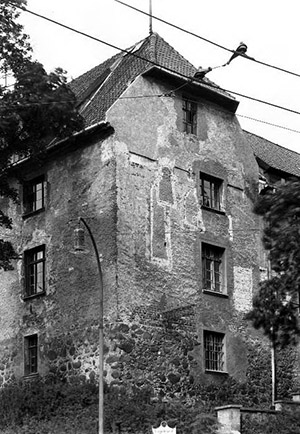

(Based on materials from Insterburger Brief )
